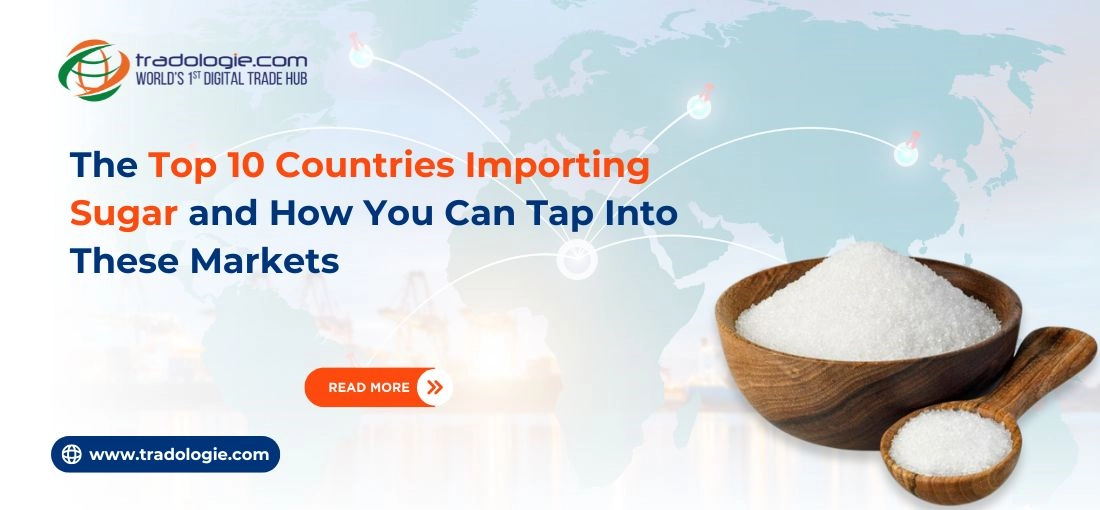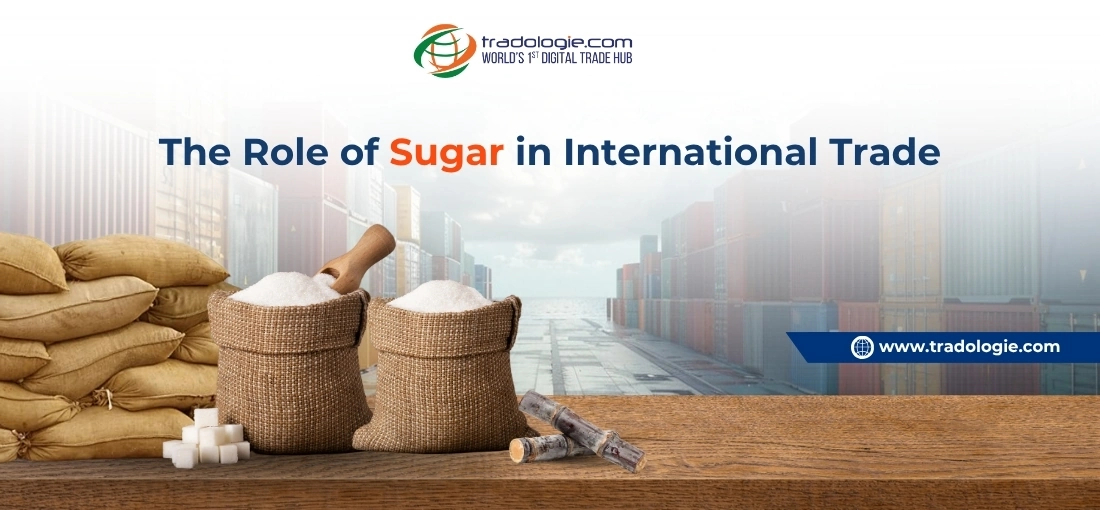Key Challenges Faced by Sugar Exporters: A Global Perspective
Top Challenges Facing Sugar Exporters in Global Trade (2025)
Sugar is without any shred of doubt one of the most extensively traded agro commodities in the world. Why wouldn't it be? It's one the primary sweetening agents used in the food and beverages industry.
However from a b2b perspective, understanding the trade environment is far from linear for exporters. Sugar exporters are continually exposed to multi-dimensional risks that include policy shifts and freight rate fluctuations to regulatory compliance and macroeconomic volatility. All this eventually impacts trade execution, margin realization, and long-term sustainability.
In global trade, the data always speaks volumes more than words. The global sugar trade was valued at USD 40.6 billion in 2023, according to OEC data. However, it isn't just the number that defines the market opportunities. Its operational dynamics are paramountly shaped by non-commercial variables such as climatic unpredictability and unprecedented geopolitical tensions.
This article outlines the key commercial and structural challenges confronting sugar exporters in today's globalized, regulation-intensive environment.
Government-Imposed Export Restrictions
Among the most disruptive risks in sugar trade are unpredictable export policies from producing nations. India, a leading sugar exporter in volume years, has frequently imposed minimum export prices (MEPs), quota systems, or outright bans to safeguard domestic availability and curb food inflation.
Such interventions, often announced without lead time, create significant contractual risk. Exporters operating on long-term bulk delivery agreements with overseas refiners and traders are forced to renegotiate terms, delay shipments, or risk demurrage and penalties. The lack of policy predictability limits exporters' ability to offer forward quotes and undermines buyer confidence in origin continuity.
Global Price Volatility and Futures Risk
Sugar prices are extremely sensitive to production reports, weather outlooks, and trade flow shifts in major producing countries—Brazil, India, and Thailand. Exporters entering forward contracts during high-price cycles often face commercial stress if international benchmarks correct sharply.
Moreover, volatility in futures markets such as ICE No.11 leads to basic risk, especially for traders who use derivative instruments to hedge against price swings. In the absence of sophisticated price risk management infrastructure, exporters operating on thin margins may find their profitability entirely eroded by a poorly timed contract or an unhedged position.
Climatic and Seasonal Supply Constraints
Unlike commodities that are available around the year, sugarcane-based sugar is slightly seasonal, with crushing windows that are determined by regional agronomic calendars. This might introduce gaps in raw material flow, especially in the off-season months which makes it challenging to ensure consistent dispatches for year-round international buyers.
Any adverse weather event—drought, unseasonal rainfall, or pest outbreaks—can severely disrupt order fulfilment for exporters dependent on a single origin or mill cluster. This makes multi-origin sourcing, long-term miller contracts, and inventory financing increasingly critical in structuring resilient export models.
Regulatory and Compliance Complexities
Exporting sugar to multiple destinations often entails differentiated food safety and quality standards, adding another layer of operational complexity. Regulatory requirements vary widely—from ICUMSA color thresholds to sulphur dioxide limits, and from phytosanitary documentation to origin traceability protocols.
Bulk sugar exporters must invest in in-house quality control systems, apart from third-party certifications to ensure compliance. Delays in laboratory approvals, container inspections, or fumigation clearances can cause missed vessels or result in buyers applying commercial penalties under strict Letter of Credit (LC) conditions. All these processes must be expeditious and on time to stay ahead of the delivery timelines.
Freight Rate Volatility and Low-Margin Pressures
Sugar especially remains exposed to freight cost surges as a bulk low-margin commodity. The volatility of ocean freight—whether driven by global fuel price spikes, port congestion, or container shortages—can erode profitability even in favourable price years.
Exporters operating under FOB contracts struggle to commit to spot pricing due to unpredictable shipping costs. Under CIF agreements, the freight component becomes a margin risk unless hedged through forward freight agreements or pre-booked tonnage—which small and medium exporters often lack access to.
Currency Exposure and Hedging Costs
Sugar is predominantly traded in USD or EUR, but exporter cost structures—labor, inputs, logistics—are typically in local currency (e.g., INR, BRL, THB). Currency mismatches introduce forex exposure, especially for long-term contracts or delayed payment cycles.
While hedging via forward contracts or options is standard practice for large-scale players, these instruments incur costs that many SME exporters cannot absorb. Sudden INR appreciation, for instance, can wipe out entire export margins for Indian sugar suppliers working on thin netbacks.
Uneven Competition from Subsidized Origins
Government-supported sugar industries in countries like Brazil and Thailand create distortions in global CIF pricing. Export incentives, tax rebates, or low-interest credit allow these producers to offer below-cost quotes in some markets, especially in Africa, Southeast Asia, and MENA.
Competing against subsidized sugar forces other exporters to either lower prices—affecting sustainability—or shift focus to niche buyers and specialty formats like low ICUMSA white sugar or refined fortified sugar, which carry marginal price premiums.
Conclusion
Exporters must navigate not only the vagaries of pricing and climate but also policy, freight, and compliance risks that directly influence viability. Sugar exporters must with their vigilance and articulate mind adopt a combination of market intelligence, diversified sourcing, contract discipline, and logistics foresight to maintain relevance and resilience in an increasingly competitive landscape as global buyers grow more structured and risk-averse.



